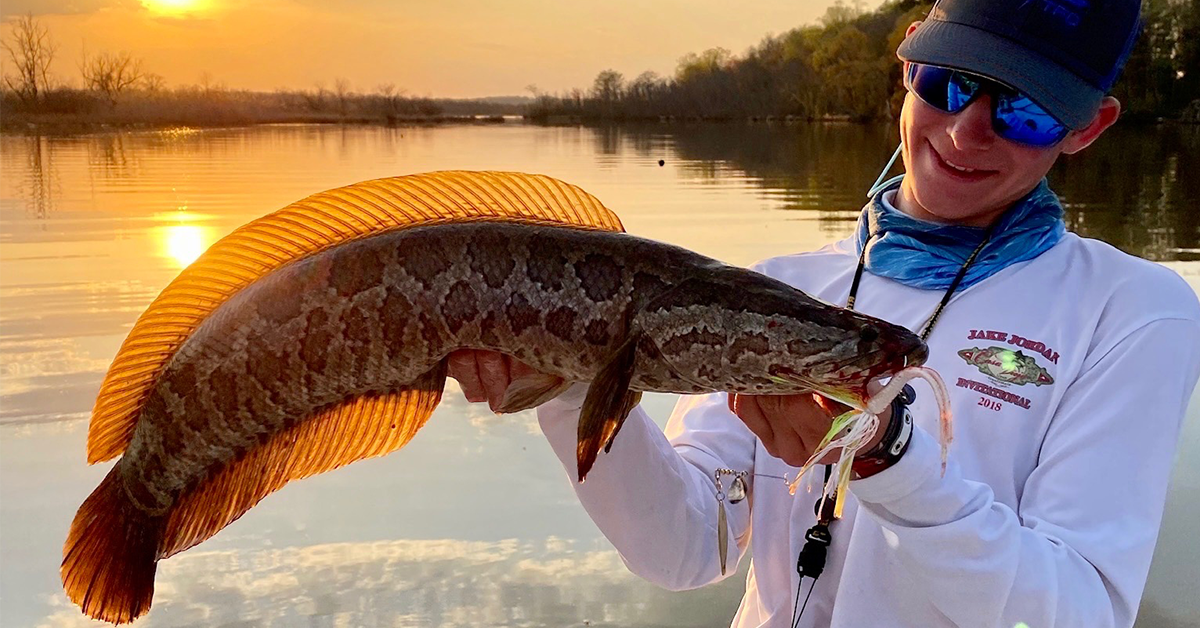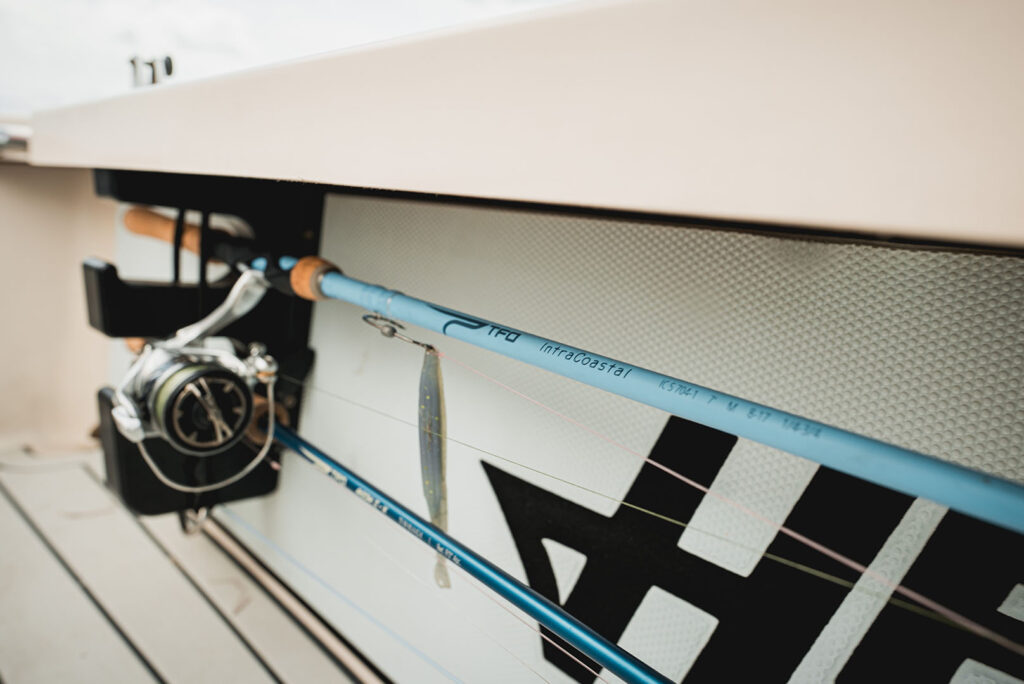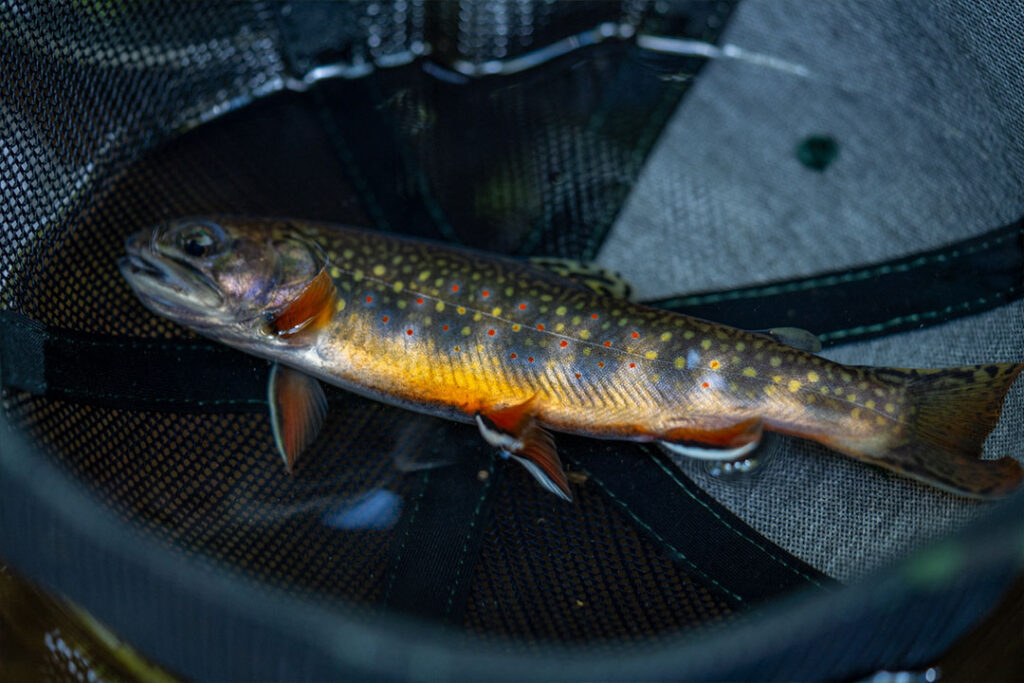Have you heard of the Northern Snakehead before? Some have heard of other people catching or spotting one, and many people have a common misconception about this species. Then there are those fishermen, like myself, anxiously await the first couple of hot and humid days of the year so we can get out on the water and enjoy every minute we are out catching this fish.
The Northern Snakehead is a predatory freshwater fish native to China, Japan, Russia, North Korea, and South Korea that were illegally introduced to canals, lakes, ponds, reservoirs, and rivers in different countries, including multiple states throughout the US. These fish prefers hot tropical-like conditions. They have a primal lung to breathe in and out of the water; snakeheads begin to breathe more air once the grass or hydrilla grows too thick in the heat of the summer, and they are very visual hunters. These fish can be spooked easily, are very aggressive when feeding and when protecting their fry. They provide fishermen with some of the most fantastic sight fishing opportunities, and they eat topwater flies and frogs regularly.

Snakehead on the fly! // Photo: Braden Miller
There is just no comparison to the sight, sounds, and show when a snakehead eats your fly or frog. If you are lucky, after site casting to a snakehead, you can witness the wake of the fish as it stalks your fly or frog. The sound this powerful fish makes at the precise moment it engulfs your fly is unmistakable, and you better be prepared for a fight. You have to set the hook with every bit of strength you can muster because the mouth of these fish is small and bony, and they have very sharp teeth and powerful jaws. You can consider the hook set round one in your fight to get your snakehead to the boat. Whether you were fishing with one of Temple Fork Outfitters’ fly or conventional rods, remember to keep your line tight! That fish will do everything it can to free the hook stuck in its mouth, which could mean violent head shakes and propelling themselves, at any angle, out of the water. Once you have the snakehead at the boat, the battle is not over yet. Once you have netted your fish and have it inside the boat is when you prepare for a little hand-to-fin combat between you and that fish. Because of their sharp teeth, you’ll need to use pliers to get the hook out. Snap a fish pics, and then release the fish to make someone else’s day.
Honestly, what more could you ask for from a fish?

You’ve been warned! Snakehead have VERY sharp teeth. Be extra careful handling these fish. // Photo: Braden Miller
Invasive species?
Yes, the snakehead is not native to the United States, but they have most definitely settled in well to their new bodies of water, and you can bet they aren’t going anywhere anytime soon. There is still a large group of people who dislike this species immensely. Still, most of the anglers I know, have met, or have seen out fishing for this amazing species have quite the opposite outlook on the situation. In my opinion, the main reason a lot of people do not view this fish as a possible future game fish, like the largemouth bass, is because when the Northern Snakehead was first discovered in the US, people were misinformed. They were told this species would eat anything and everything that lived in the same water, and that they were highly aggressive and classified them as “invasive.” People were told that if they caught one, it MUST be killed. It was perceived that these fish were going to take over the rivers, but I can attest that this simply isn’t the case. From what I’ve seen, other species are coexisting just fine.
Where are they?
If you want to catch a snakehead, you will need to locate what waters they live in. According to USGS, at least one snakehead has been reported from the following states: Arkansas, California, Delaware, Florida, Georgia, Hawaii, Illinois, Maine, Maryland, Massachusetts, Mississippi, New Jersey, North Carolina, Pennsylvania, Rhode Island, Virginia, and Wisconsin. Where there is one, there are more. They inhabit canals, lakes, ponds, reservoirs, and rivers. I choose to target snakeheads in my local local tidal rivers of Virginia. More specifically, I look for lily pads, hydrilla, spatterdock, and hard submerged grass lines.

Another day in Snakehead Paradise, Virginia. // Photo: Braden Miller
Snakehead On The Fly
My go-to rod for catching snakeheads with a fly rod is an eight-weight, but depending on various situations, a seven-weight or nine-weight rod could be the best option for specific conditions. My favorite snakehead fly rod has been my TFO Axiom II-X 8 wt. This rod is lightweight, accurate at range, and has zero issues casting a large fly, like a Game Changer or foam frog pattern.
The 7wt LK Legacy and the 8wt LK Legacy are two other options that will work great for targeting snakehead on the fly. These rods are light, very accurate, and have tons of backbone in the butt to fight this hard fighting species. I tend to use the 7wt LK Legacy when fishing smaller flies and lower tides to make a gentler presentation. The downside to using a smaller-weight rod is that it can be a difficult battle when fish take you into thick cover.
For a reel – I have been using the BVK SD the most recently. I choose this reel not because I am necessarily using the drag, but because it is a super lightweight large arbor reel. While fishing all day, a reel that is reduced in weight is a plus in my book, and a large arbor reduces line twists/coils. I primarily fish Scientific Anglers floating lines like the SA Tropical Titan and intermediate lines like the Sonar Titan. I use a floating line when I am fishing topwater presentations and subsurface flies that I want to wake or just hang in the first foot of the water column. I use the intermediate fly lines when I am fishing down the channel on low tide and in the deeper creeks many times because those fish will drop out of the hydrilla, lily pads, and other grass and lay on either the hard grass line or in the channel.
I reached out to Tim O’Neill, who has fished for Snakeheads with me for two years now, about what he loves most about these mesmerizing fish, and here’s what he had to say:
“Northern Snakeheads are one of the coolest, most unique fish you can chase on fly gear. They have these two beady little black eyes on top of their wide flat head. Their beady eyes, along with a slightly up-turned mouth, make them tailor-made to eat on top. They can lay motionless in a grass bed waiting for the proper moment to pounce, and when they do…it is one of the most aggressive surface takes you will ever see. Yes, spend some time chasing snakehead on the fly, and you will soon forget about trout fishing.” – Tim O’Neill

Photo: Braden Miller
Flies, Leaders, and Retrieves
I throw many topwater fly creations I’ve tied, but foam divers and waking patterns rule most of that. Another go-to pattern I throw is the many different styles of Blane Chocklett’s Game Changers. These include the Feather Changers, Jerk Changers, Finesse Changers, Crafty Changers, and small Hybrid Changers. When I am fishing these types of flies, I usually am fishing with a 6-foot leader; I honestly try not to keep it simple and not complicate things by using 25lb to 30lb fluorocarbon, or sometimes if I’m lazy, I’ll just fish straight 30lb.
When fishing the Game Changers, I will use a two-handed strip just to keep the fly moving down a grass or pad line (unless I’m sight fishing), and look for a fish chasing, a lot of times, you will see a wake following your fly or just the fish, or I will strip it down the line for a few feet and pause now and then. I don’t fish top water flies and divers as fast as the changers. I strip, strip pause, strip, strip, strip pause – just mix it up and see what is working that day and time. You have to see what they are in the mood for that day. They could be fired up, or they could have had a minor cold front move through the night before that could have them a little slower or finicky.

Photo: Braden Miller
Snakehead on Conventional Gear
When I am fishing for Northern Snakeheads with my conventional gear, I always take two specific TFO rods with me: the Tactical Elite Bass 7’3″ Heavy and the Tactical Elite Bass 7′ Medium Heavy.
The first rod – the Tactical Elite Bass 7’3” Heavy Casting – I choose when fishing topwater frogs. The power of this rod allows me to get the hardest hook set I can with the heavy frog hooks, and it allows me to work those frogs with ease.
The Tactical Elite Bass 7’ Medium Heavy Casting rod is the second rod I use for fishing small to medium-sized swimbaits on weedless rigs down grass lines or creek channels. This rod allows me to get solid hooksets driving the heavy swimbait hook into the fish’s hard bony head, and it allows me to flip and pitch the swimbaits into small pockets and target cast.
On both of these setups, I am running high gear ratio baitcasting reels like the Shimano Curado or SLX either in an 8:5:1 or 7:4:1 and with 50 lb braided line.

The TLE MBR 736-1 is a great choice for targeting snakehead with conventional gear. // Photo: Braden Miller

Photo: Braden Miller
Conventional Lures & How to Work Them:
There are a ton of conventional lures you could use to attract a Northern Snakehead – both topwater and subsurface. I tend to stick with frogs and small to medium-sized swimbaits. I do not like a frog that is too big; I lean towards small to medium-sized ones. I have caught most of my larger-sized snakeheads on smaller, more finesse-style body frogs than the larger sizes. There are two categories of frogs: “working” frogs and “retrieving” frogs. You will fish“working” frogs slower and will not be covering a large section of water as quickly. However, you should achieve some very, very confident eats. There are a bunch of companies that produce frogs that will help you achieve this.
Next, the “retrieving” frogs are the ones you want to fish when you want to cover a large amount of water, and a lot of times, you will get more active and aggressive fish that will chase, wake, and either engulf or simply stare your frog down. Now when I say engulf or stare at your frog, I mean that when you have a fish waking on your frog, and you stop retrieving it, most of these fish will either engulf (eat) it, or you can make them eat it by walking it in place. Also, small twitches of your rod tip will make your frog just twitch around a little bit. There is also an extensive number of companies producing great retrieving frogs—my all-time favorite types of frogs are produced by Teckel.

Photo: Braden Miller
Different species that share the same waters as a Northern Snakehead
There are no other species where snakeheads live because they ate them all…. just kidding! There is an abundance of different fish species living with and around the Northern Snakehead. One day while fishing for Northern Snakehead in mid-June, I also saw a blue catfish, bluegill, bowfin, common carp, grass carp, largemouth bass, longnose gar, shad, snakehead, and yellow perch. A snakeheads favorite food, in my area, is the mosquitofish or killifish. You can look down the bank and see thousands of them. All of these incredible fish coexisting together, all healthy and in large populations. While fishing, I have also seen bald eagles, blue herons, ducks, egrets, and many other birds who call this habitat home.
Bowfins and Gar
Although snakehead are one of my favorite species to target on fly or conventional tackle, bowfin are also a blast to target and are my second favorite fish to catch. These fish run the show on the river, and they know it too. A bowfin is literally a living fossil; these fish have been around since the dinosaur ages. Since they’ve been around forever, they have evolved into the perfect predator. The bowfin is aggressive, and extremely confident when they eat, making them a fantastic species for sight casting. Although it’s not difficult to get them to eat, don’t forget to strip-set hard! You may not know it, but chances are there is a place near you that you could chase after bowfin. If I were you, I would start looking because you are missing out if you aren’t fishing for them!

The Axiom ll-X 8wt is my Go-To for targeting bowfin and snakehead on the fly!
The longnose gar lands third on my list. Gar are plentiful in many rivers; they offer excellent sight fishing and give anglers tons of chances to land one. They can be challenging and a lot of fun to fish for when they are aggressive and snapping at your fly. I love how hard a gar pulls, how crazy cool they look with their armor-like scales and long narrow jaws.
Both bowfin and gar have a primal lung in addition to their gills, which means they breathe underwater and they can come up to the surface to breathe. To anyone who looks down on bowfin, gar, snakehead, and other “trash” species, I urge you to get out there and give them a shot! These species are here to stay, so more people need to take the time to research all of the new information that is out about them. They deserve more respect because these fish could quite possibly be some of the most remarkable species, in my opinion, to fish for in the United States. So many people can target these great fish near them, and if you are one of them, I suggest you get out there and find them.

Gar on the LK Legacy 8wt! // Photo: Braden Miller
I reached out to the man responsible for my snakehead addiction, my good friend and a Virginia snakehead guide, Grant Alvis, about how many different species he has seen on the river while Snakehead fishing:
“In a single day of snakehead fishing, I’ve caught snakehead, bowfin, longnose gar, yellow perch, white perch, largemouth bass, various sunfish, blue catfish, channel catfish, and chain pickerel. That’s probably my best species day while I was actively trying to catch as many species as possible.” – Grant Alvis
The Northern Snakehead is here to stay, and its popularity is rapidly growing around me and in other neighboring states. They can grow to weigh 20 pounds, fight harder than the average bass typically targeted, offer great topwater eats, and you can sight fish for them! In my eyes and others just like me, consider the Snakehead a gamefish. Hopefully, one day soon, everyone will view them not as an invasive species that will destroy the ecosystem but as another game fish that lives in their home waters that is a thrill to catch. So, whether you are targeting snakeheads on the fly or conventional, you are guaranteed to have fun on the water, and you may just find your new favorite species!
Blog written by TFO Ambassador Braden Miller. You can find out more about Braden at his website Miller Time Flies, and follow him on Instagram here.

Photo: Braden Miller
![]()






